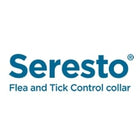
Skin infections are a common health issue in dogs, often causing discomfort and affecting their overall well-being. As a responsible pet owner, it's important to recognize the signs early and seek proper treatment to ensure your dog stays happy and healthy.
In this guide, we will cover the common types of skin infections in dogs, their symptoms, causes, treatments, and tips for prevention.
Common Types of Skin Infections in Dogs
Skin infections in dogs usually fall into three categories:
Bacterial Infections (Pyoderma):
These infections often result from wounds, allergies, or underlying conditions like hypothyroidism. Pyoderma can cause red bumps, pustules, and flaky skin.
Fungal Infections:
Yeast infections are common, particularly in moist areas such as the ears, paws, and skin folds. Symptoms include itching, redness, and a strong odor.
Parasitic Infections:
Mites causing mange or fleas can lead to severe skin irritation and secondary infections if left untreated.
Symptoms to Watch For
Early detection of skin infections can prevent more serious complications. Look out for the following signs:
- Persistent itching or scratching
- Redness, inflammation, or swelling
- Crusty or scabby skin
- Hair loss or bald patches
- Unusual odor from the skin
- Open sores or wounds
- Licking or chewing at specific areas
- Thickened or discolored skin
If you notice any of these symptoms, it’s important to consult your veterinarian for a proper diagnosis.
Causes of Skin Infections in Dogs
Several factors can contribute to skin infections, including:
- Allergies (food, environmental, flea bites)
- Poor grooming habits
- Injuries or skin trauma
- Weak immune system
- Underlying health conditions (like hypothyroidism or Cushing’s disease)
- Parasite infestations
Infections often develop because bacteria or fungi take advantage of already damaged or irritated skin.
Diagnosis of Skin Infections in Dogs
Your veterinarian will carry out a detailed physical examination and might recommend additional diagnostic tests such as:
- Skin scrapings
- Bacterial or fungal cultures
- Allergy testing
- Blood tests
- Biopsies (in chronic or severe cases)
These tests help determine the exact cause and guide the best treatment plan for your dog.
Treatment Options for Skin Infections in Dogs
The course of treatment is determined by the specific cause of the infection. Common methods may include:
Topical Medications:
Antibacterial or antifungal creams, ointments, and medicated shampoos to treat localized infections.
Oral Medications:
For more serious infections, your vet may prescribe oral antibiotics or antifungal medications to help eliminate the issue.
Anti-Inflammatory Medications:
Steroids or other anti-inflammatory drugs may be used to reduce itching and swelling.
Treating Underlying Conditions:
If allergies, hormonal imbalances, or parasites are the root cause, your veterinarian will address these issues to prevent future infections.
It is crucial to complete the entire course of medication, even if symptoms improve, to prevent recurrence.
Home Care and Management
While professional treatment is necessary, home care also plays a significant role in recovery:
- Keep the infected area clean and dry.
- If needed, prevent your dog from scratching or licking the area using an Elizabethan collar (also known as an e-collar).
- Follow the full course of prescribed medications.
- Regularly groom your dog to maintain a clean and healthy coat.
- Monitor for any symptoms of recurrence and seek prompt veterinary advice if symptoms return.
Preventing Skin Infections
Prevention is always better than a cure. Here are some simple steps to keep your dog’s skin healthy:
- Maintain a regular grooming routine.
- Provide a balanced, nutritious diet to strengthen your dog’s immune system.
- Protect your dog from parasites with preventive medications.
- Address allergies early with the help of your veterinarian.
- Keep your dog’s living environment clean and dry.
Regular vet check-ups are also important for early detection of skin or health issues.
Final Thoughts
Skin infections in dogs are quite common but can be effectively managed with timely care. Spotting the signs early, following appropriate treatment, and taking preventive steps can greatly improve your dog’s well-being. If you notice any symptoms, please reach out to your veterinarian promptly to ensure your furry companion receives the care they need.






